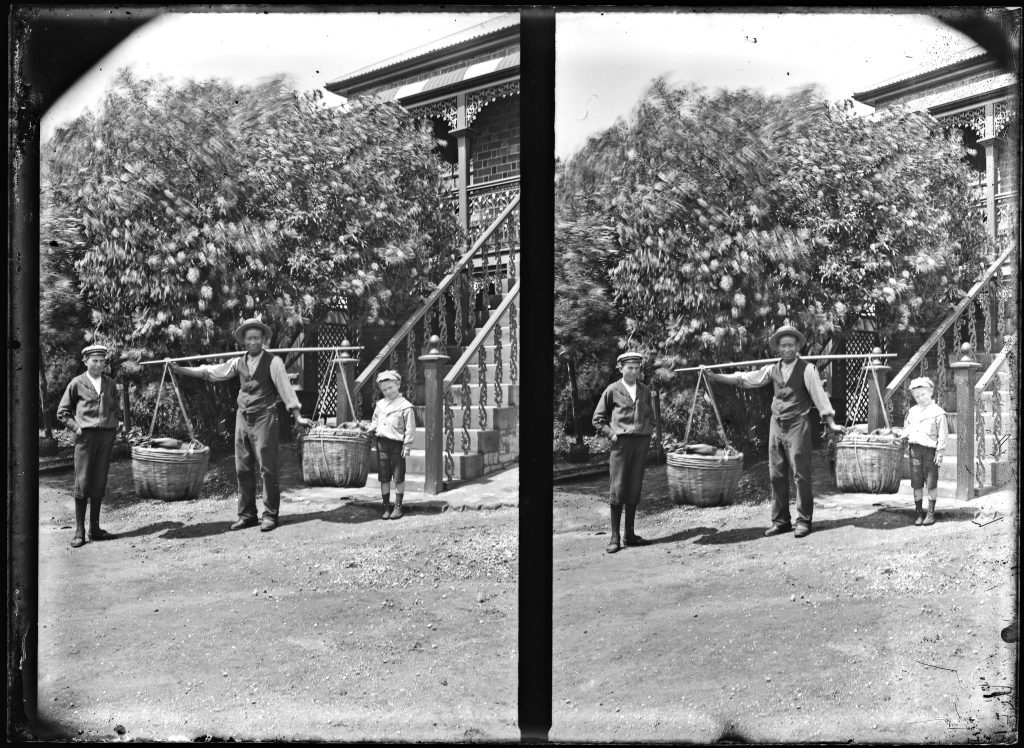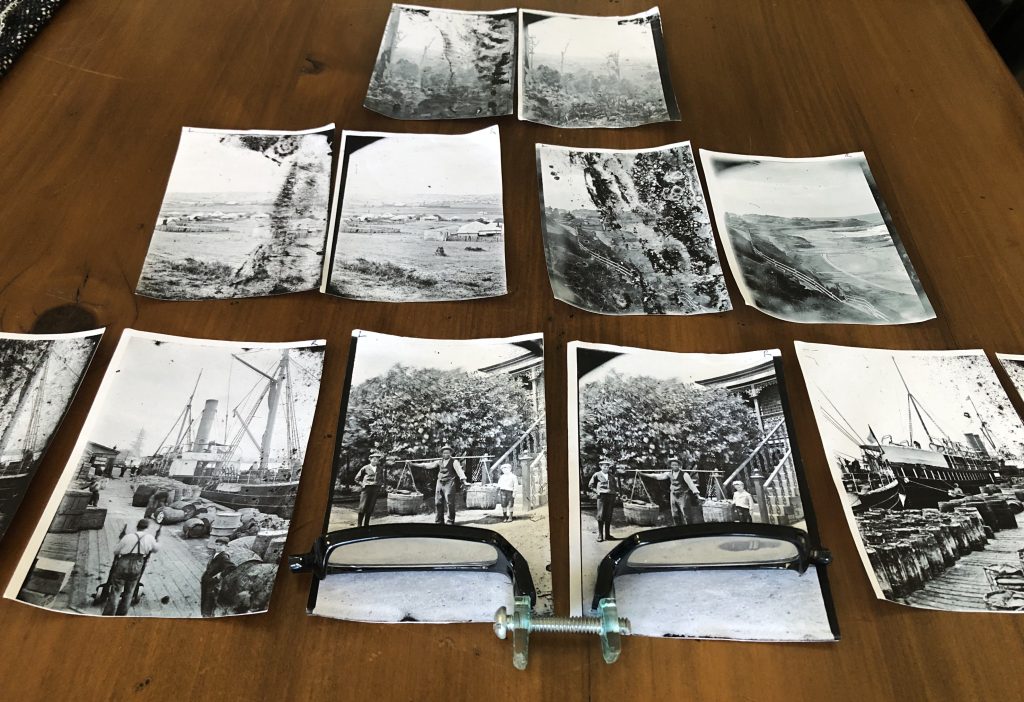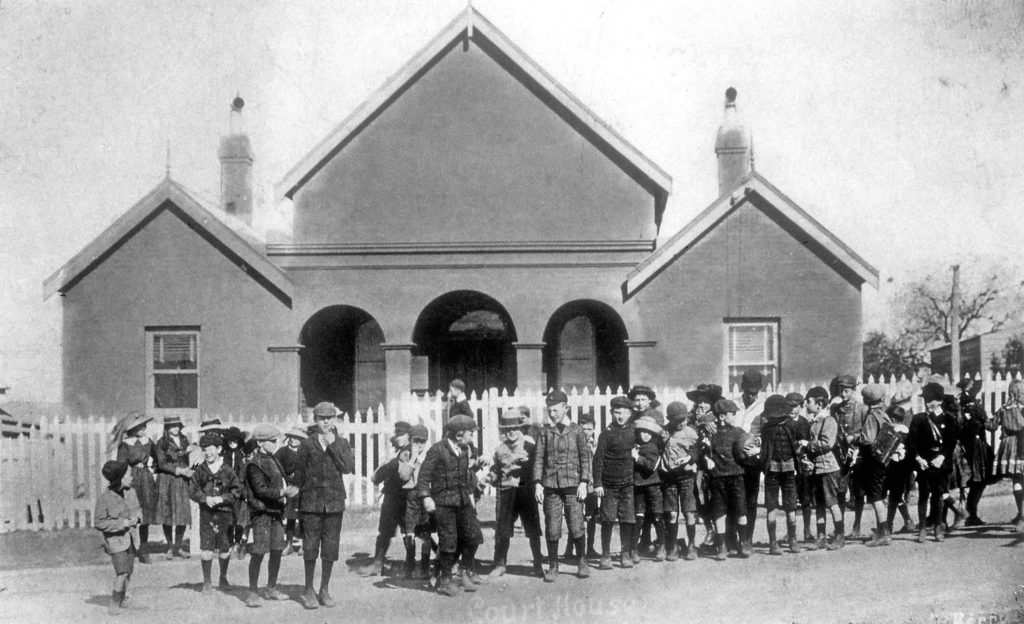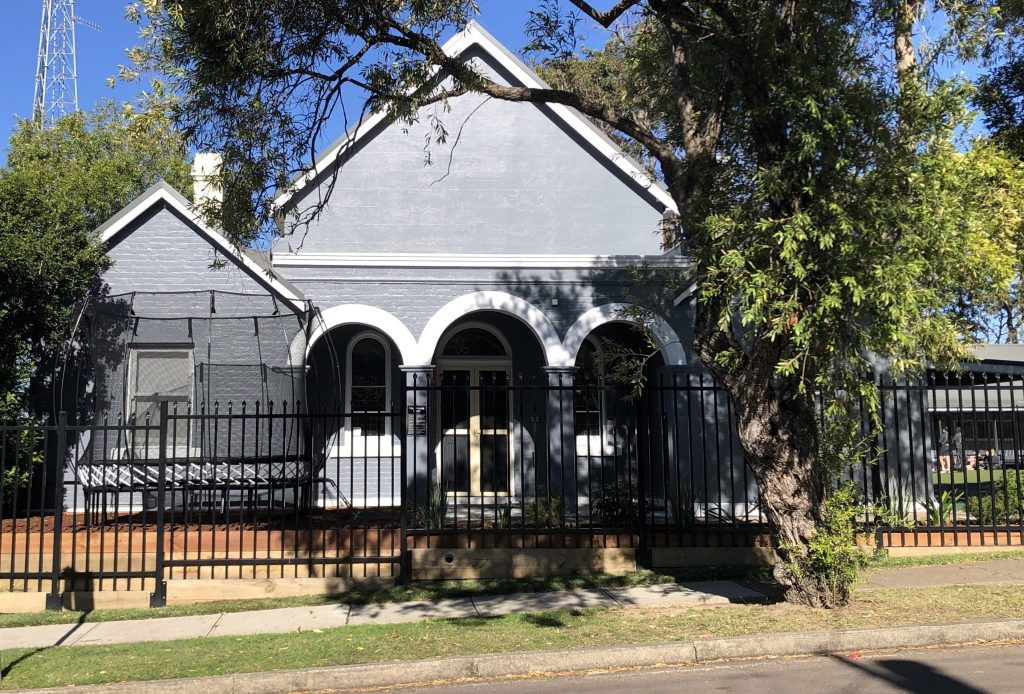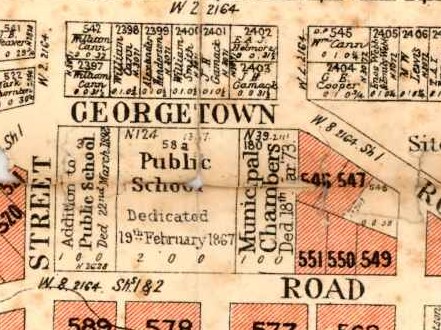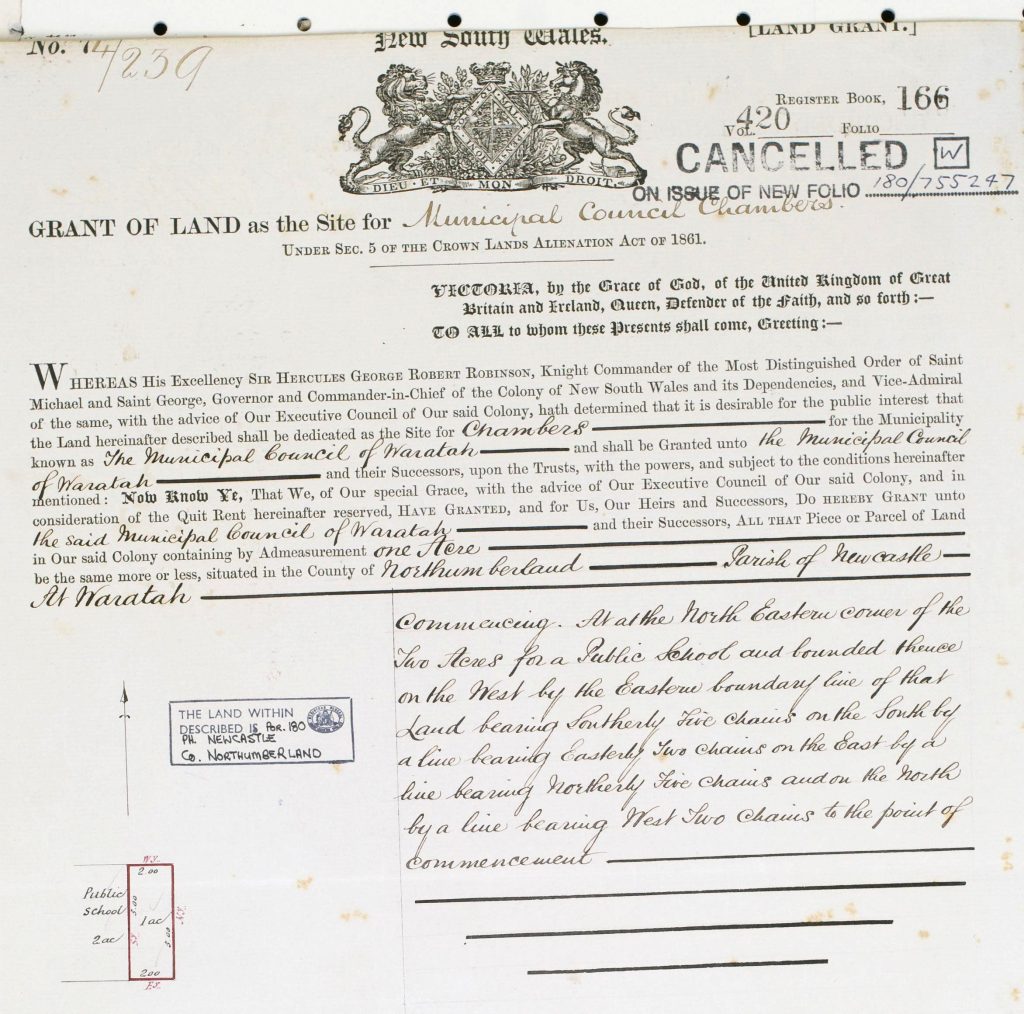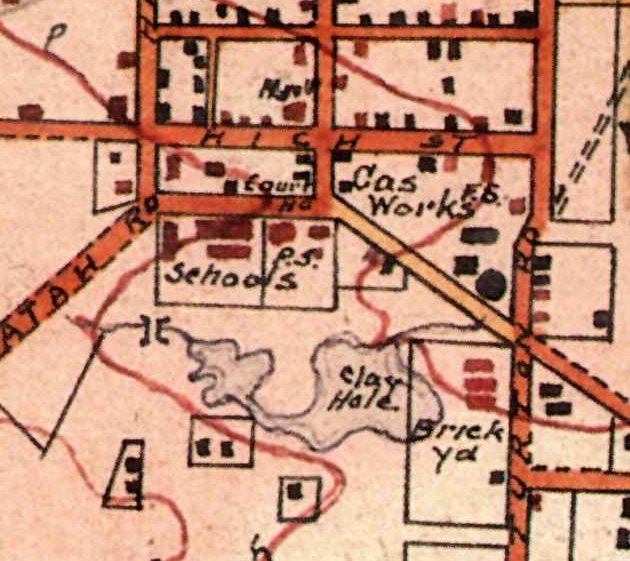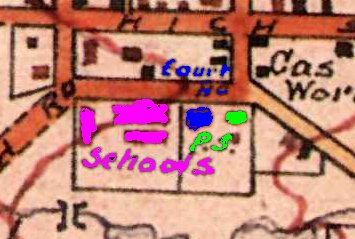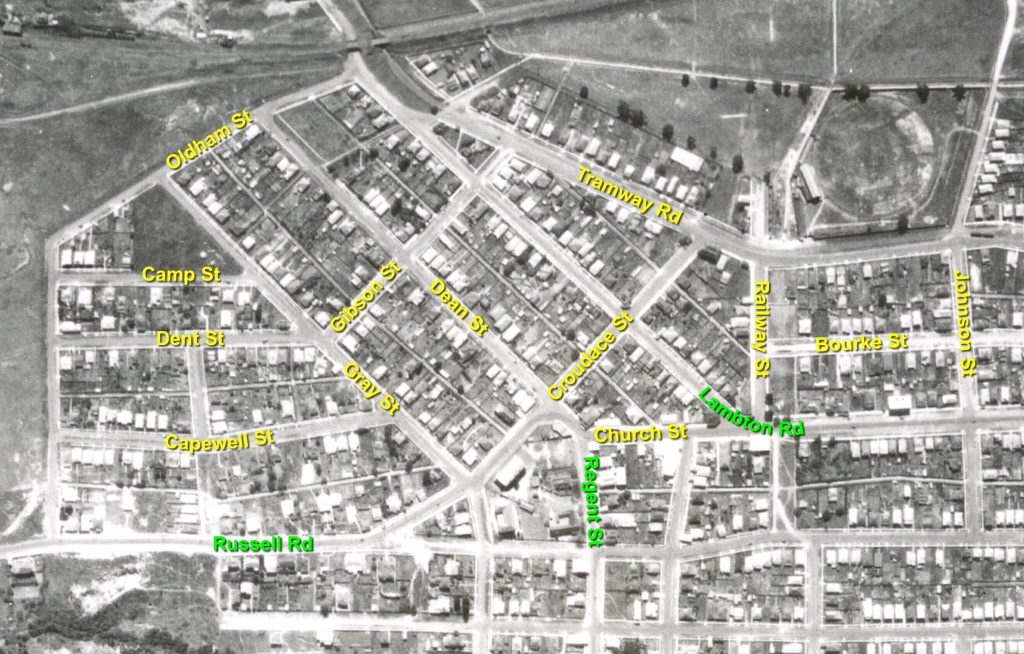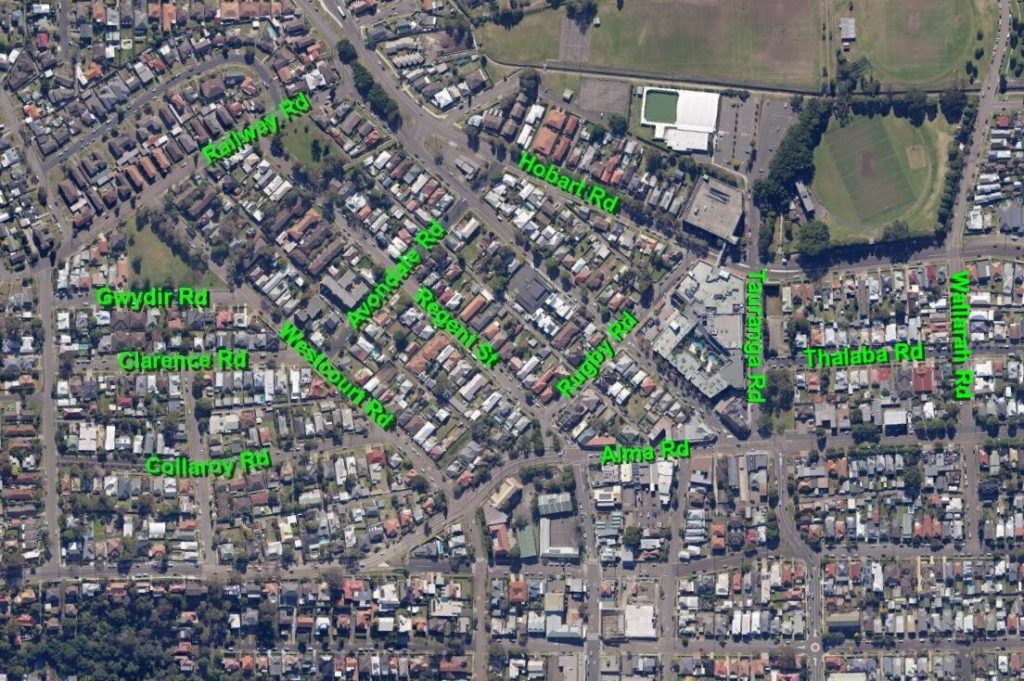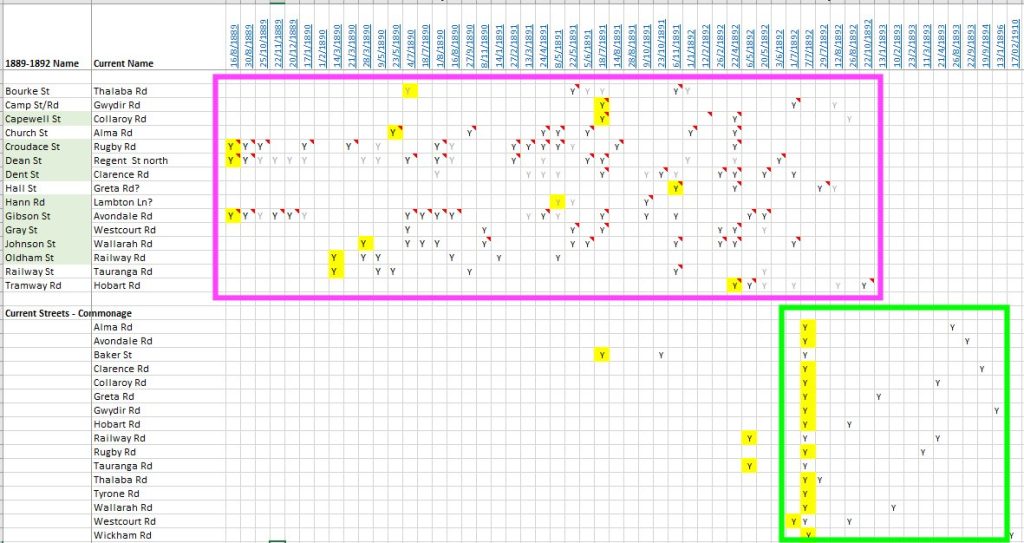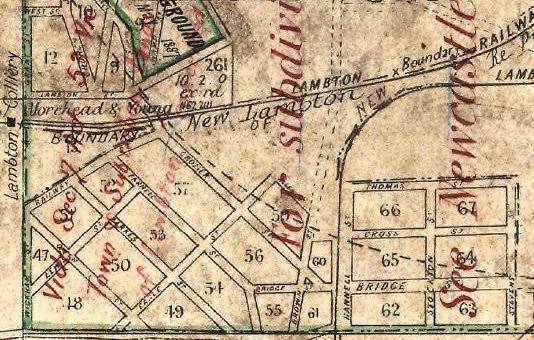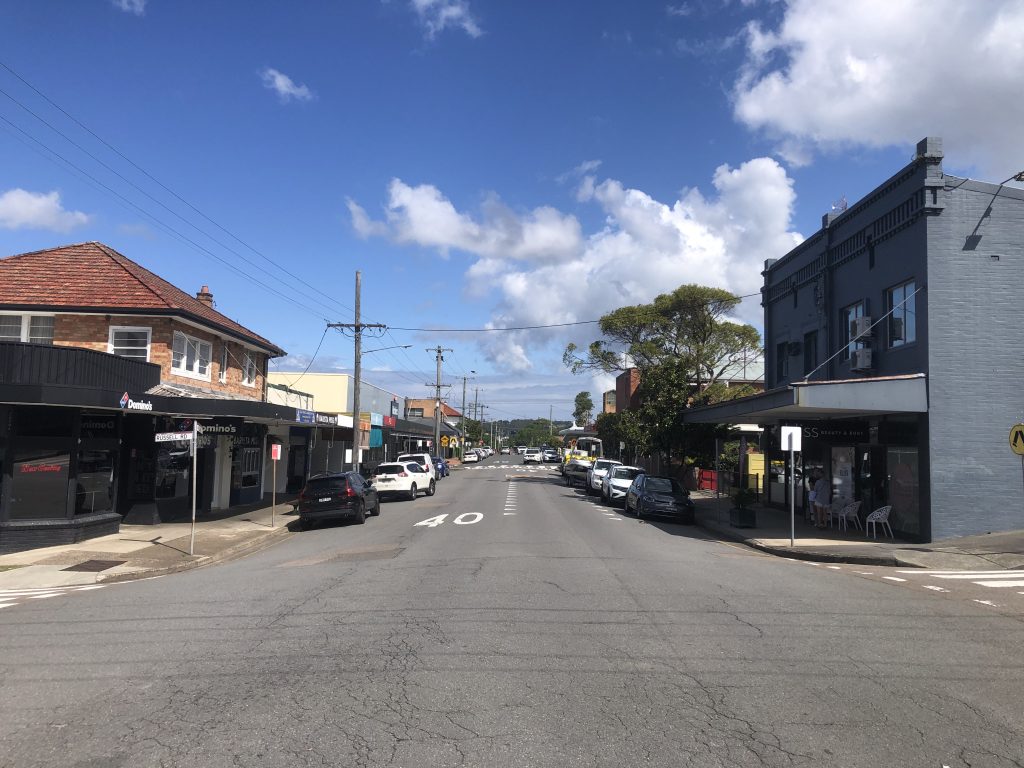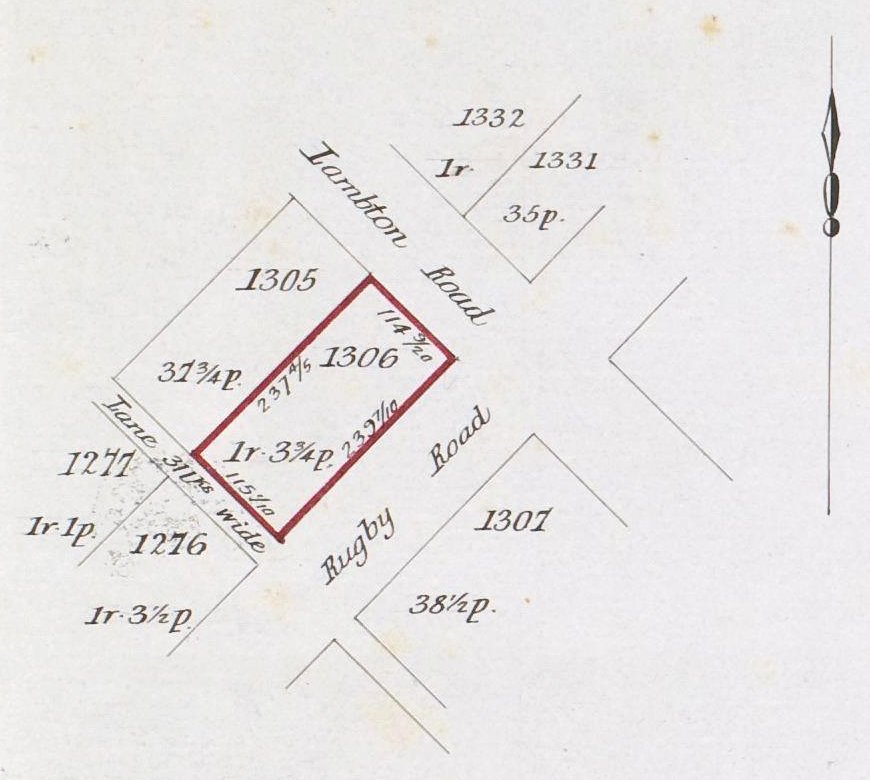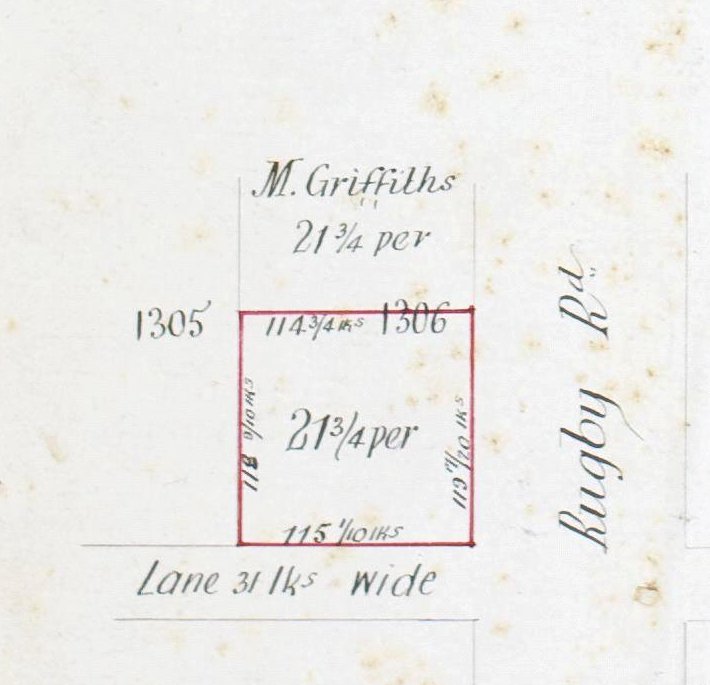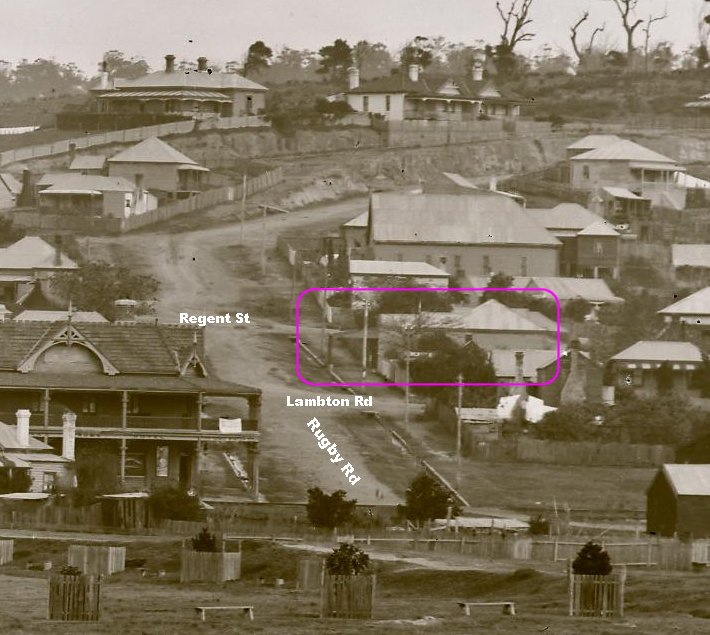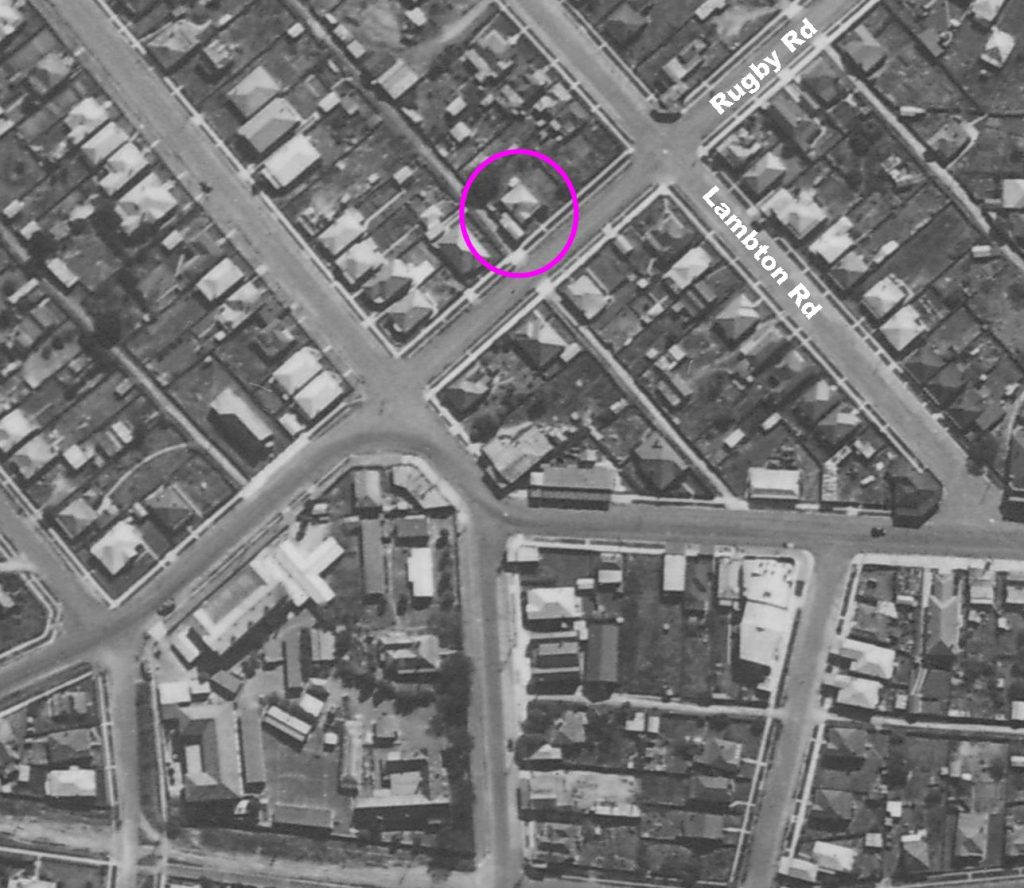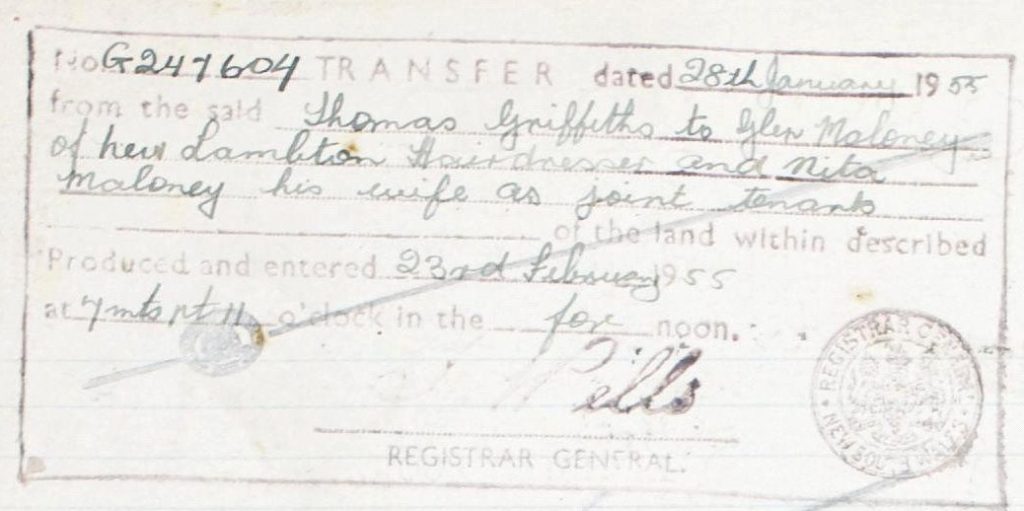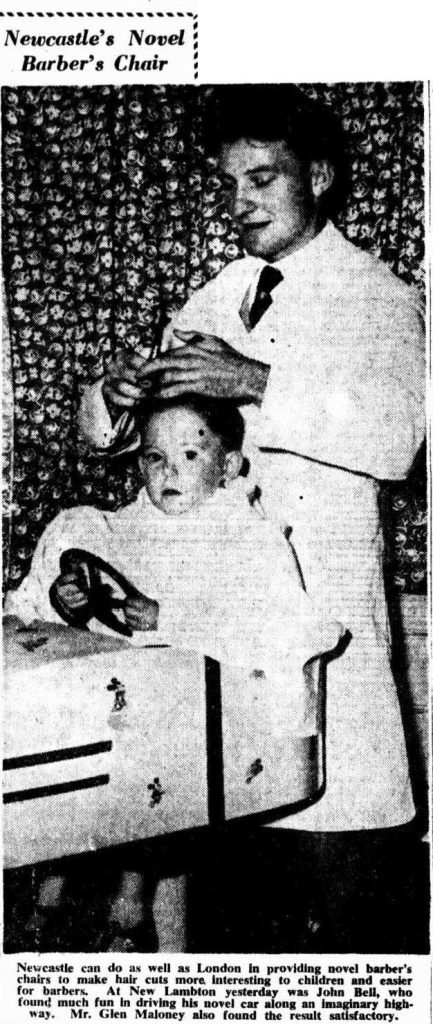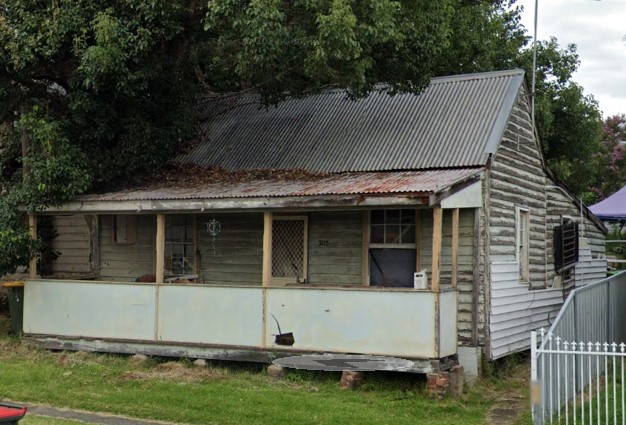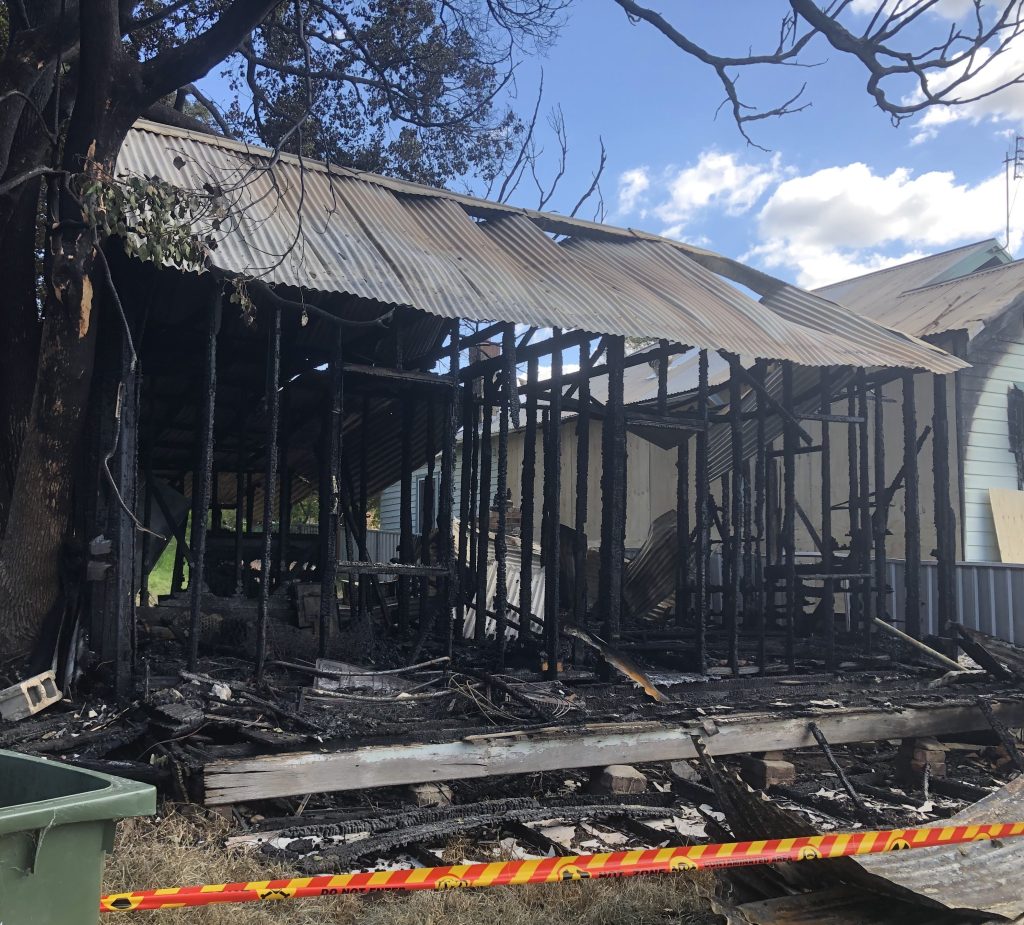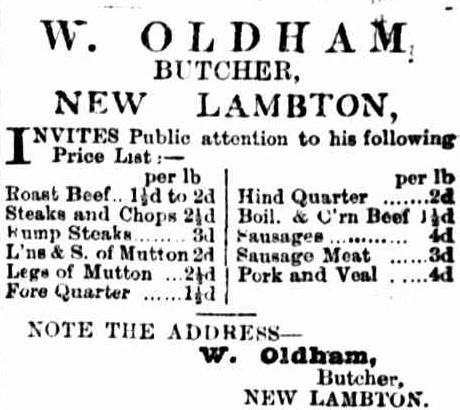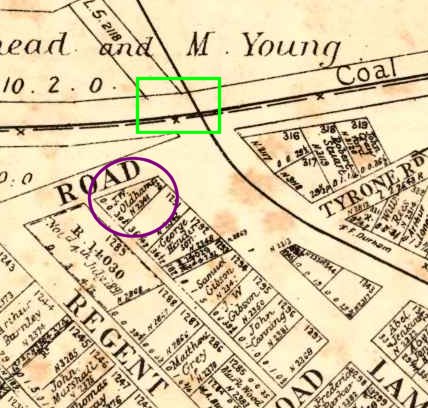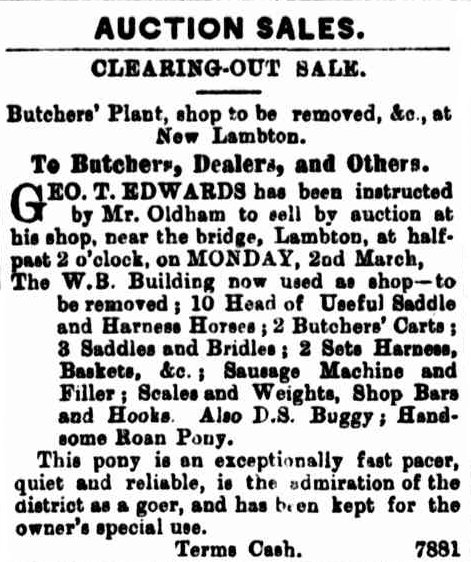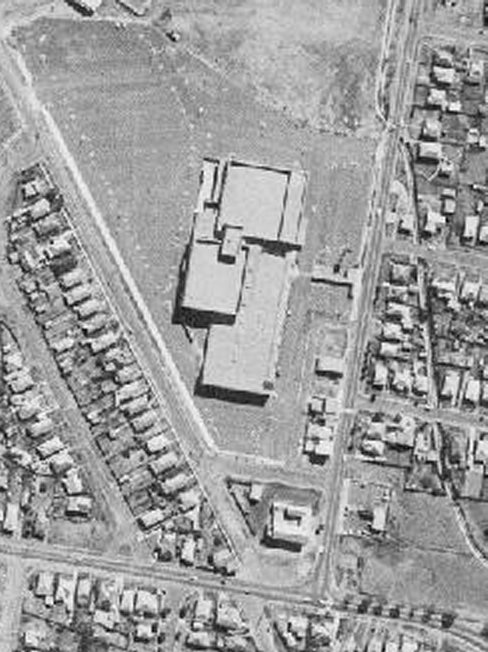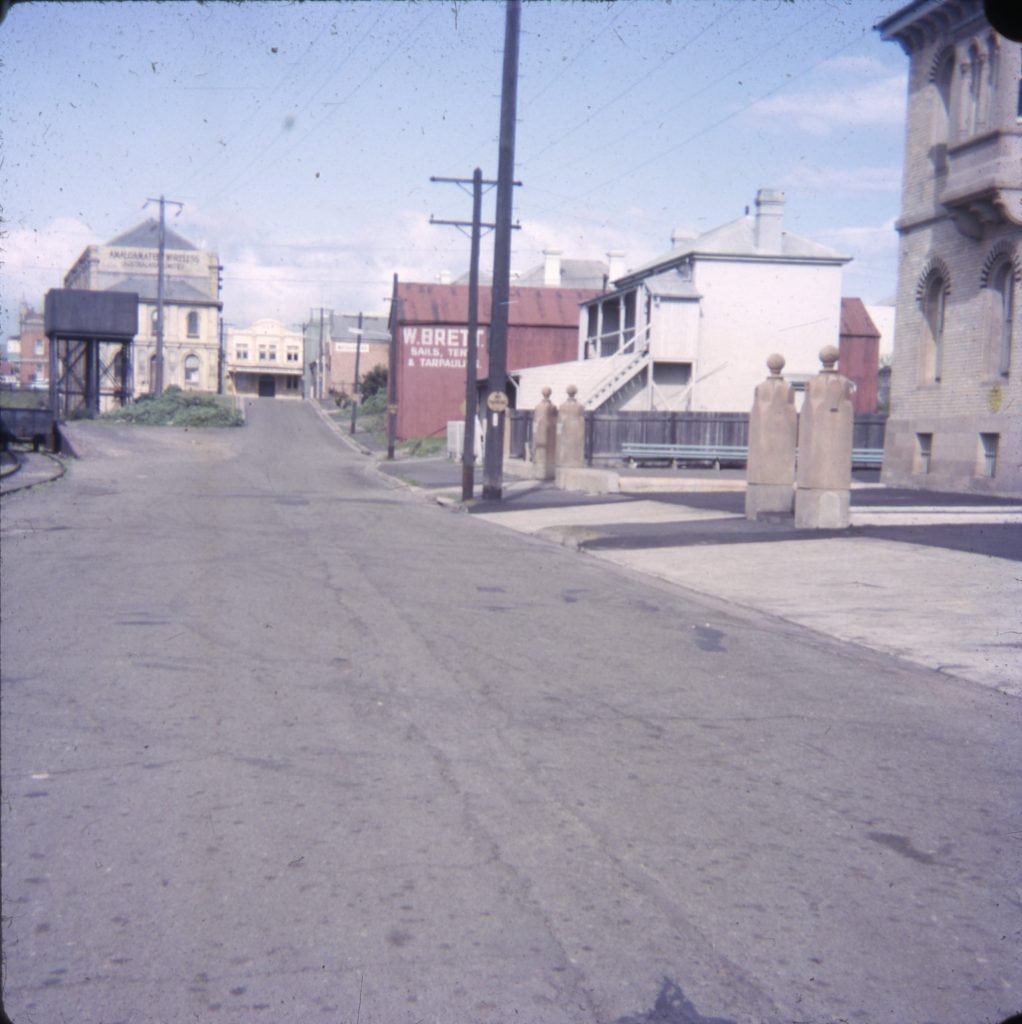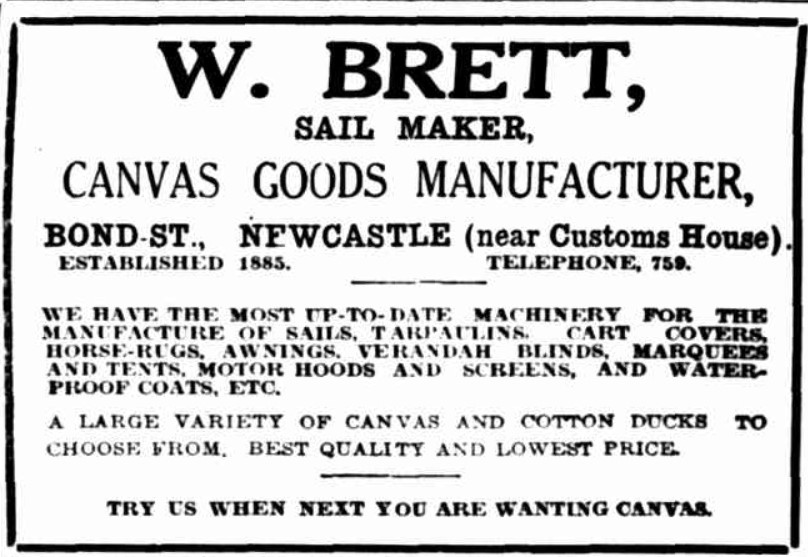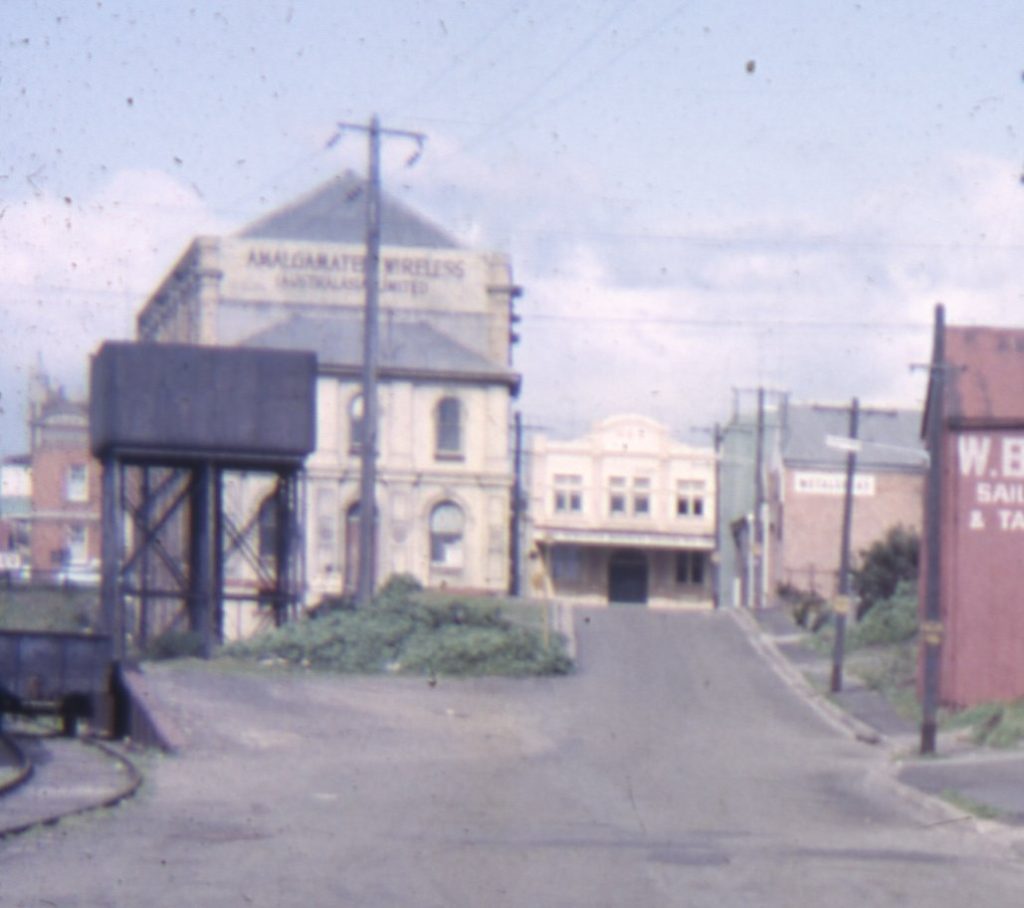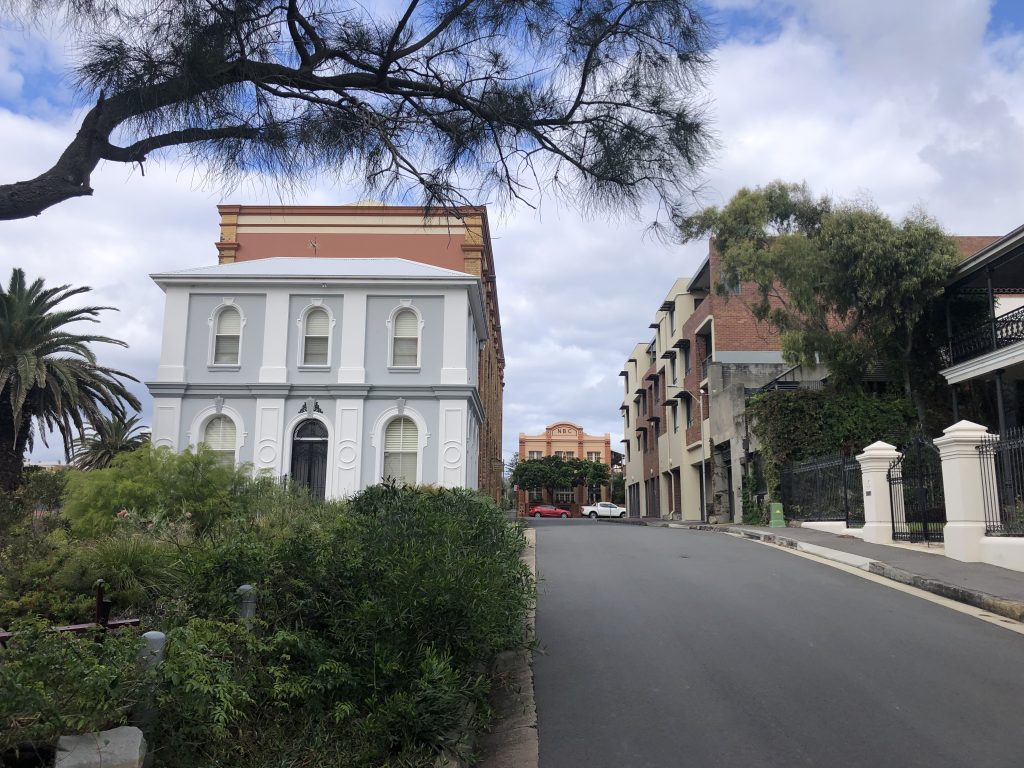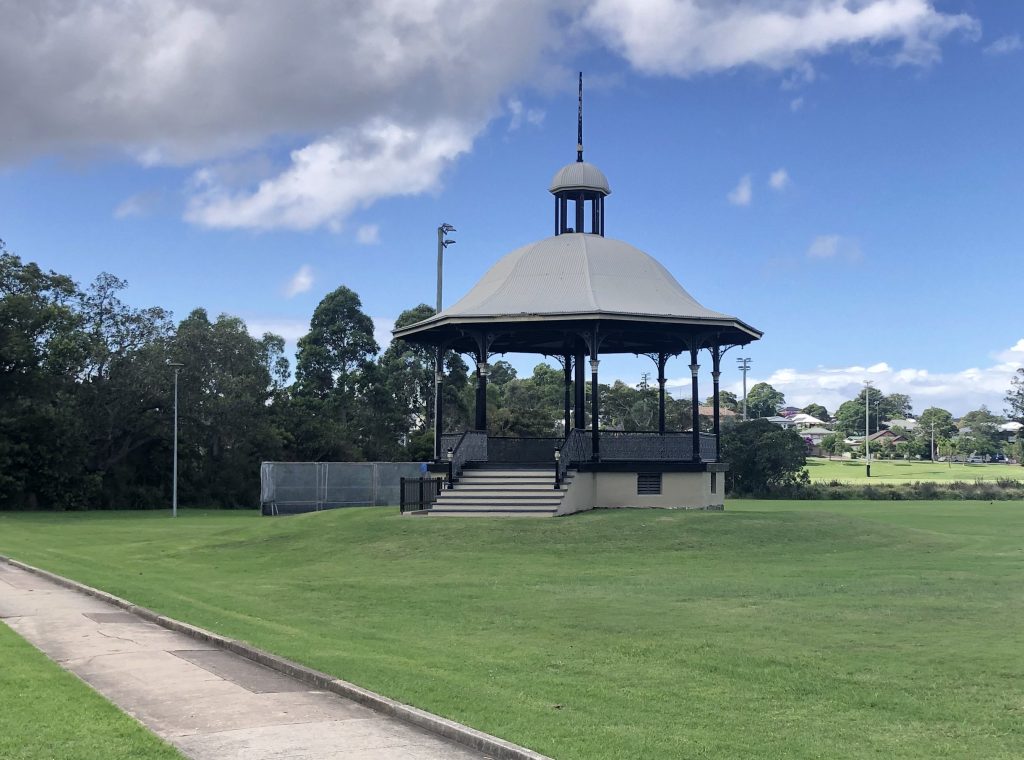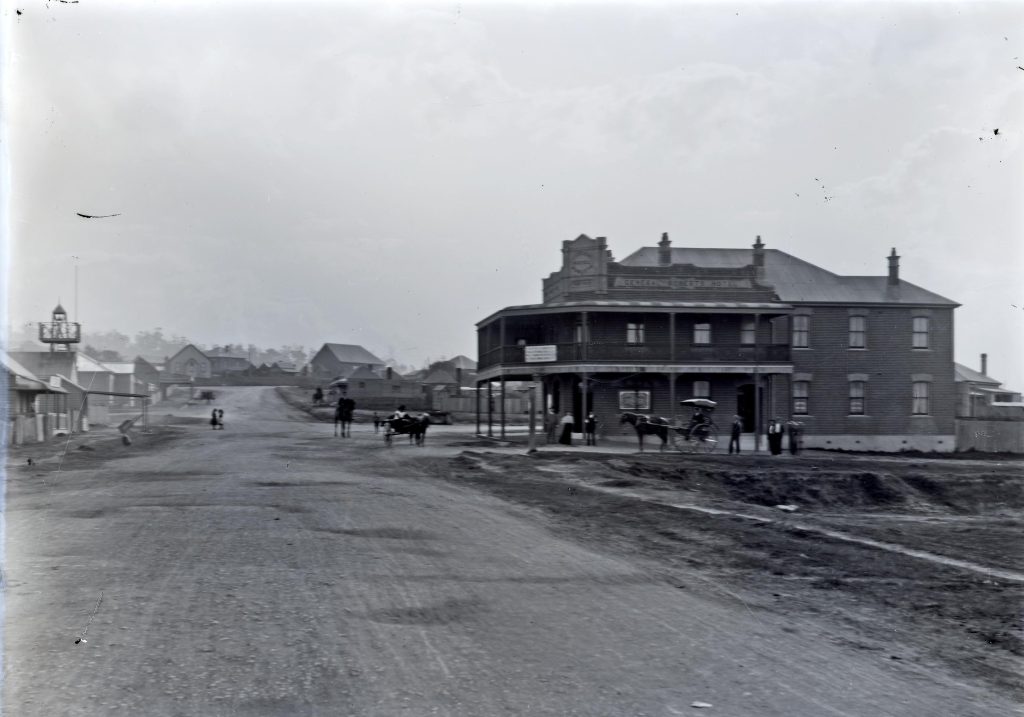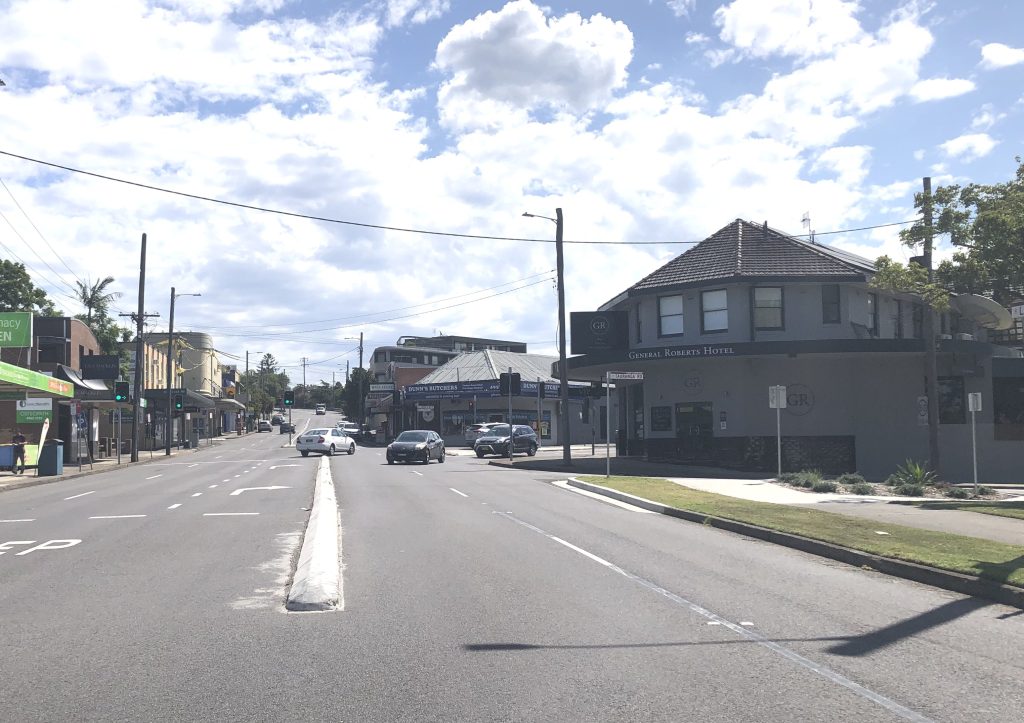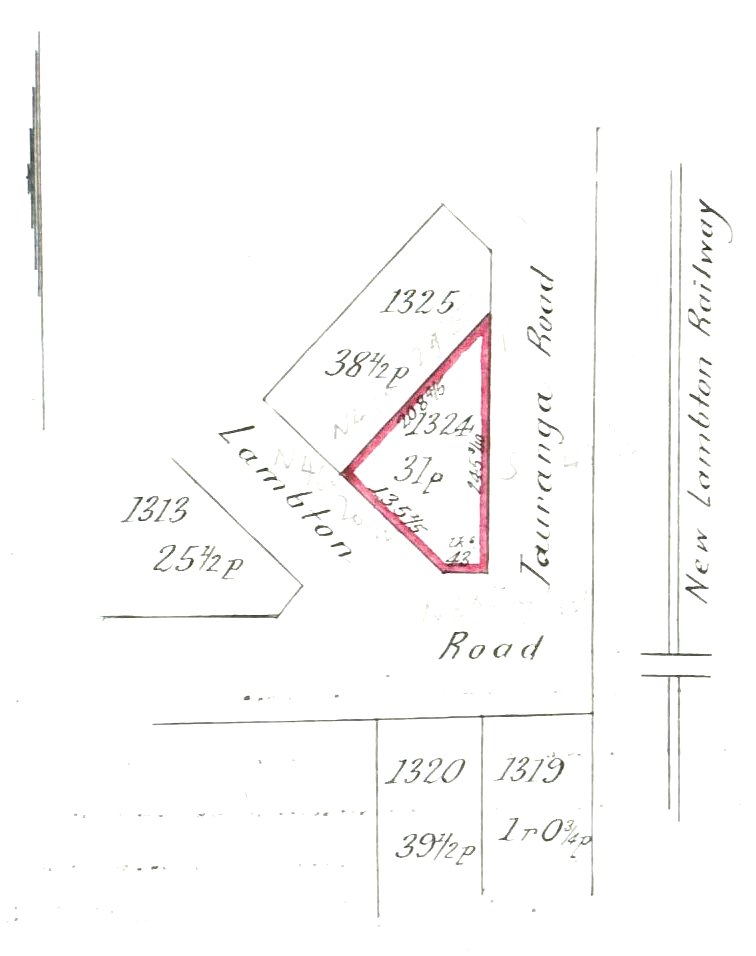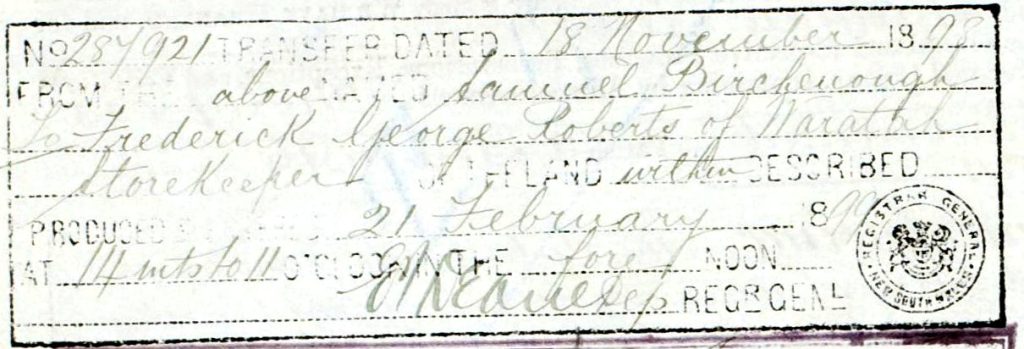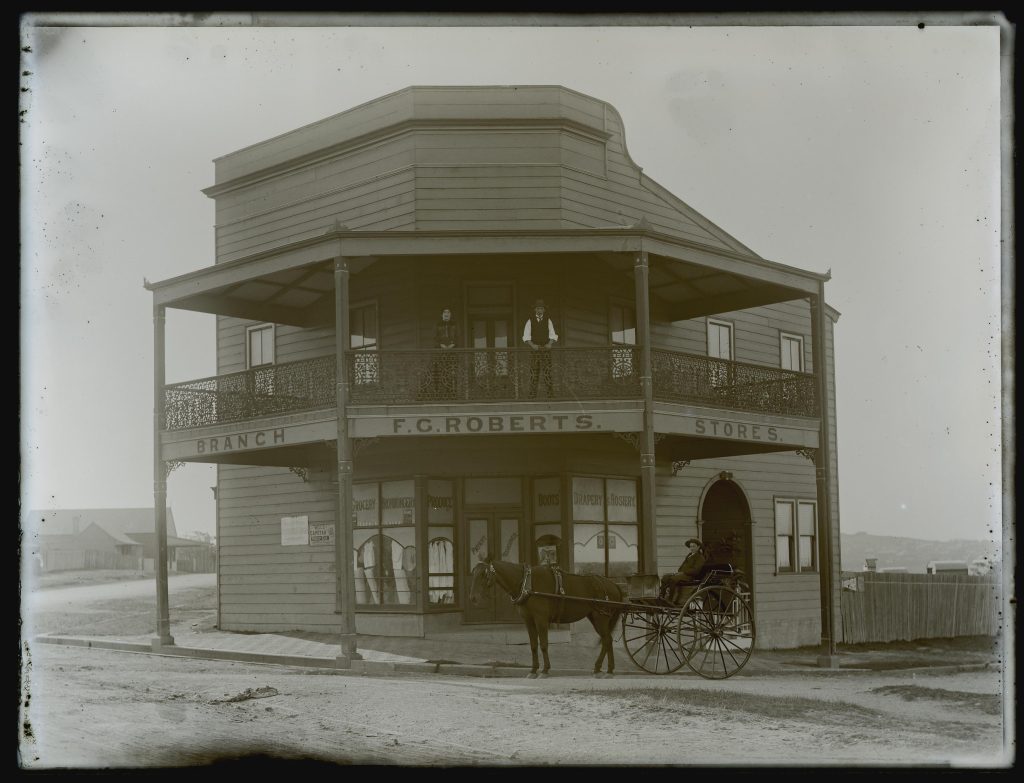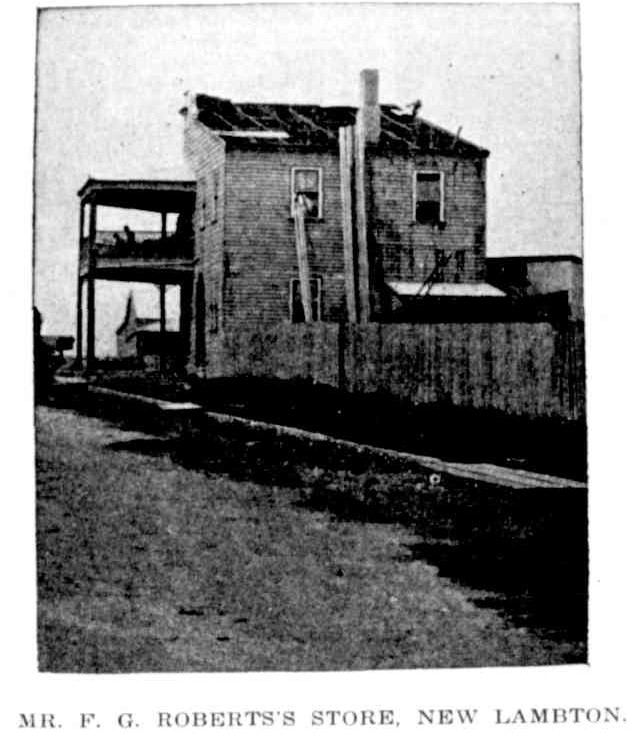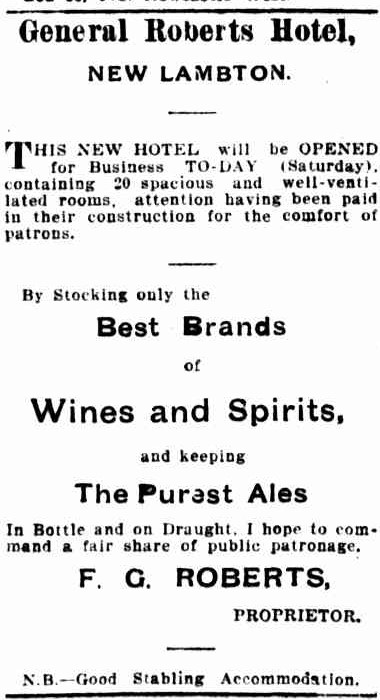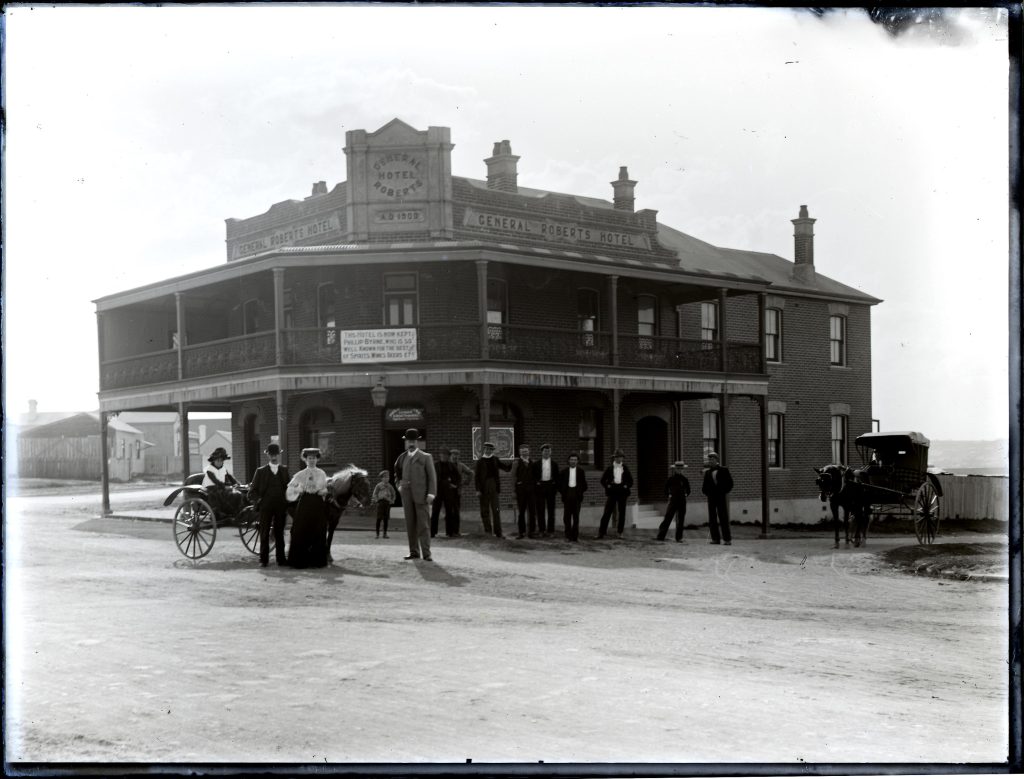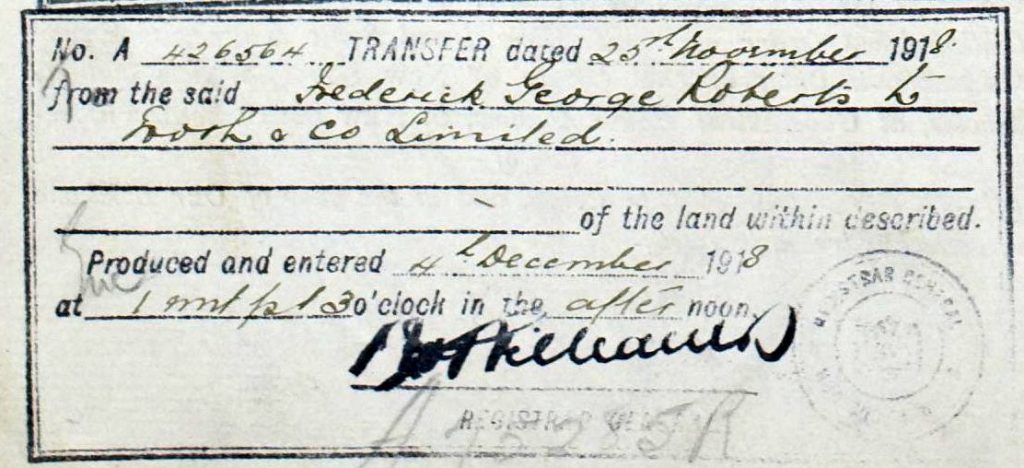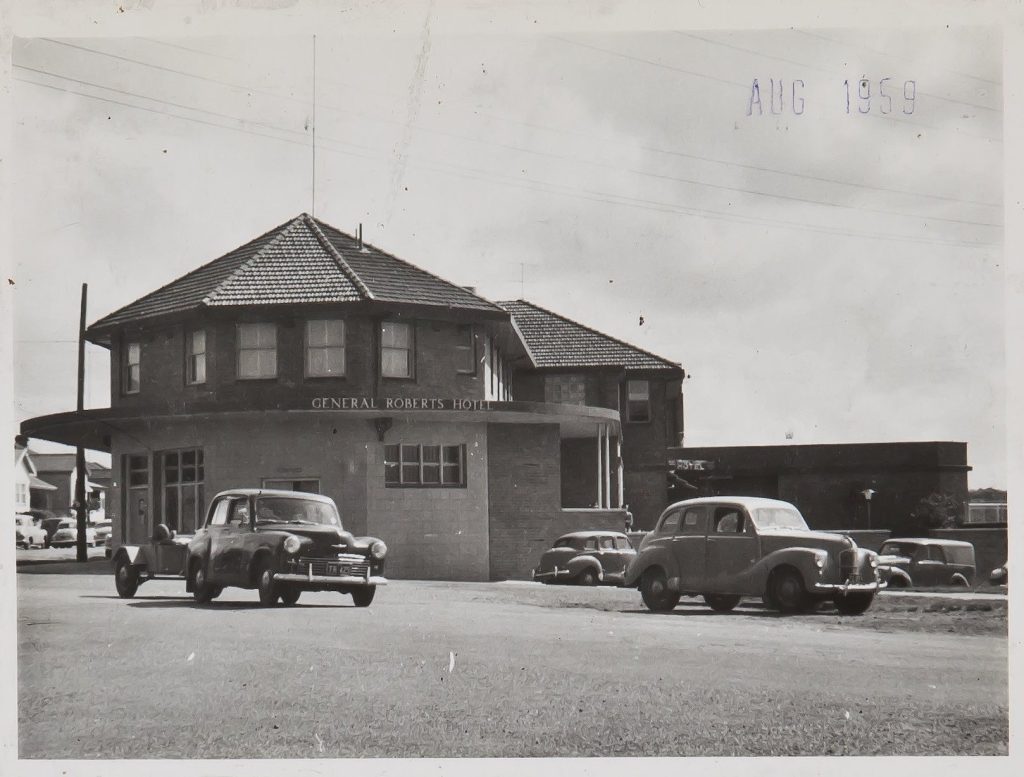Some things change, some things stay the same. When we look at Ralph Snowball’s photograph of Morehead St Lambton from 125 years ago, the most striking difference is a complete absence of cars. Occupying the street instead is something very familiar to us, people enjoying an outdoor activity on a public holiday. The photo, from the morning of 13 October 1898, shows a group of cyclists at Lambton about to set off on the next leg of a “cycling century run”, a 100-mile ride to Stroud and back.
The event was held as part of the Eight-Hour Day celebrations, the forerunner of our Labour Day public holiday. The ride was a test of endurance rather than speed. There were no trophies for the fastest, but a badge for everyone who finished within the allotted time. The ride was intended for fun, but within limits. At a planning meeting for the ride the committee noted that “any exhibition of larrikinism will lead to disqualification.”
The ride was divided into several legs, with predefined stops where participants would have a paper ticket punched by an official. At 6:30am, 46 cyclists set off from Newcastle Post Office, with the first leg detouring through Adamstown to Lambton to make the total distance up to 100 miles. With the next leg to Raymond Terrace the cyclists enjoyed a short break as they crossed the Hunter River on the Hexham punt. The group reached Stroud at 12.26pm and after an appetising snack commenced the return journey at 1.09pm. Despite darkness falling, and the necessity of walking their bikes up the Sandgate hill due to road repairs, 38 participants arrived back at Newcastle Post Office by 7:30pm, having completed the 100 miles in under 13 hours. Special mention must be made of the three women who completed the course, not only keeping up with the men, but doing so while wearing highly impractical ankle length skirts!
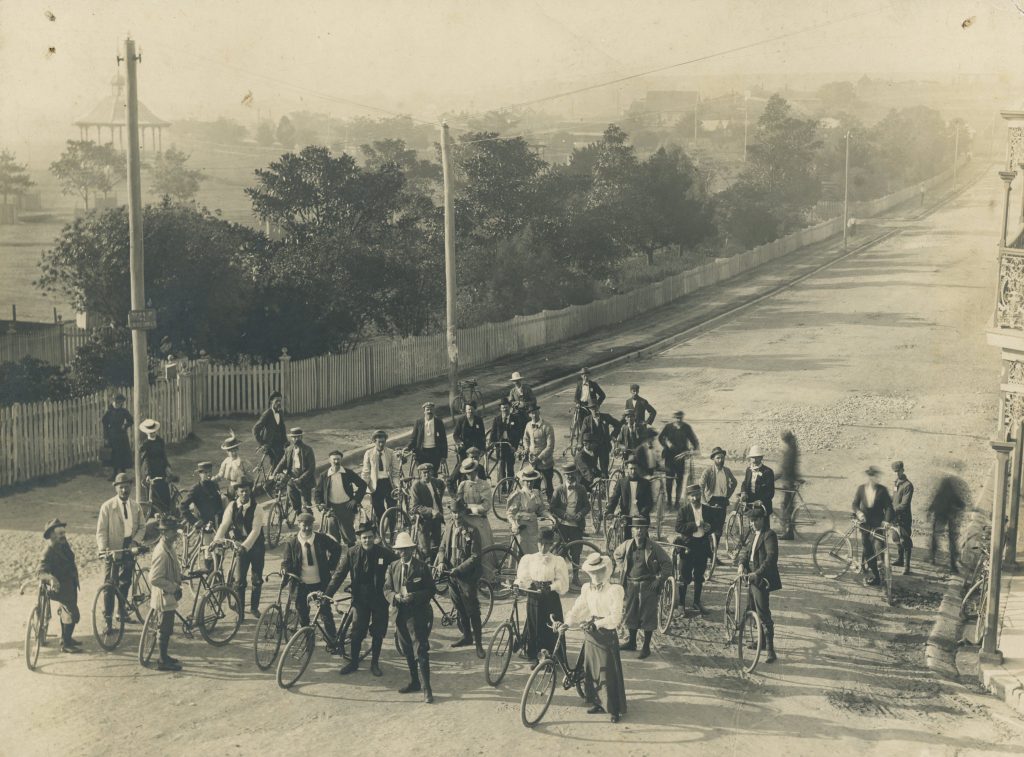
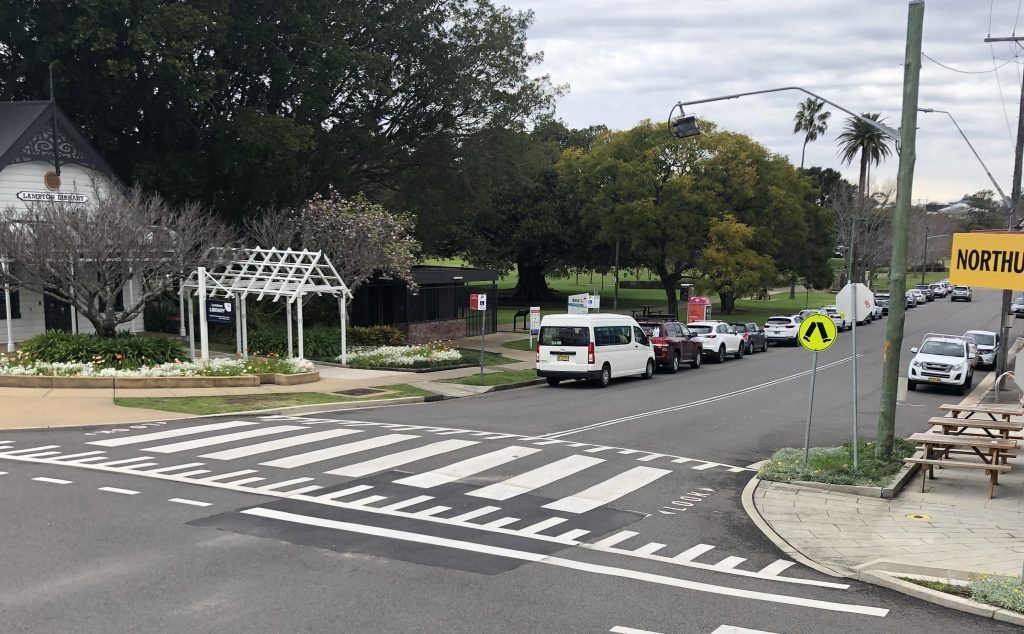
The article above was first published in the September 2023 edition of The Local.
Additional Information
The full text of the newspaper report on the cycling century run is reproduced below.
The Cycling Century Run. This event came off yesterday, and proved a thorough success. The route was to Stroud and back, a deviation being made in the morning through Hamilton and Lambton and across to Waratah to make up a deficiency in the mileage. The start, was made very nearly sharp to time, 6.30, though there were several laggards, who came on late. Forty-six started, including four ladies, with the intention of trying to get right though, and there were two others who went as far as the Twelve Mile only. Mr. J. D. Smith set the pace to Hexham Punt, 14 miles, which was reached at 7.57, three minutes late, some delay occurring at Lambton, where the second puncturing of tickets was made, because the secretary had hung behind with the puncturing instrument to puncture the tickets of the idle starters. The punt was left at 8.10. From this point Mr. W. T. Gibb, jun., set the pace. The Terrace, six miles, was reached at 8.40, about 6 min being made up, loss 1 min, and after 15min spell, another start was made for McNiven’s, Derlang, or the Twelve Mile, Mr. Gibb still pacing. The Twelve Mile was reached at 10.3, time table time exactly. Here a most excellent breakfast was provided. Sharp to time. 10.33, another start was made, Mr. H. A. Graham setting the pace to Stroud, F. Woods’ hotel (21 miles). On this section the pacemaker being as a matter of fact paced pace was broken, and despite an unprogrammed halt of 10 minutes being called halfway, the arrival at Stroud was made at 12.26, 13 minutes ahead of schedule time. A most appetising snack was here provided, a rest being taken of 30 minutes for those who ran to time, the scorchers, and among them the pacer and his hustlers, and those who allowed themselves to be bustled with him, getting 43 minutes. Nevertheless there was some complaining. Mr. Flood provided a very appetising snack. Sharp at 1.9-the schedule time-the return, journey was commenced, Mr. Brett setting the pace back to Witt’s Half-way House at Limeburner’s Creek for dinner, the bustled pacemaker on his last century closing up the rear. Witt’s was reached (16 miles) at 2.50, five minutes behind schedule time a five-minute spell (uncatalogued) being taken half-way. The three nasty hills, up and down, up and down in sharp succession, going into and coming out of Stroud, proved very trying. Mr. Witt provided a very excellent dinner. Leaving Witts’ to time, 3.45, the run to Raymond Terrace (16 miles) was made with Mr. Krempin setting the pace, inside schedule time, the arrival being made at 5.15 instead of 5.21. Leaving here at 5.36, after 21 minutes’ spell, Hexham punt was made, in schedule time, and the departure thence, with plenty in hand for completing the journey in schedule time, despite the darkness and the necessity for walking the Sandgate Hill, now under repair. From Hexham punt to Waratah Mr. D. Gordon set the pace, and thence home, Mr. H. Warr. Thirty-eight tickets were handed in at the Newcastle Post-office, which was reached at 7.28, two minutes inside schedule time, the distance proving fully the 100 miles, cyclometers saying 101 to 102. It is reasonably believed that one name may have to be added to the list, that of a rider who had to inflate his tyres every three quarters of a mile or so, and who is believed, to have arrived home at about 10 minutes to 8, and to have been unable to find the secretary to hand in his ticket, though that functionary was standing at the Criterion Hotel corner till 7.45 on the lookout for stragglers. It was a very pleasant day, and although the heat was pretty severe, and the dust rather bad in places, it must necessarily be called a pleasant ride of its kind, no wind of any moment interfering either way; and regarding these century runs it has always to be remembered that there are scores of young athletic men about to whom they are by no means a severe trial. All the same, they are a very fair average test of one’s capabilities of enduring physical fatigue; and, for instance, those able to perform such a feat are fit, without, much preliminary hardening, for active military service in emergency. Skill, however, is of course no small item in the programme. The names of those who handed in their tickets at the post office are given hereunder: – Ladies: Mesdames Snow (North Sydney Bicycle Club), Greenwood, and Harry. Men: Messrs. W. T. Gibb, jun., T. Snow (North Sydney Bicycle Club), – Patey, T. S. Everett, F. Hughes, F. W. Krempin, H. Warr, Albert Hopkins, E. Barnes, George Proctor, A. W. Judd, W. J Greenwood, Percy Taylor, – Hawthorne, Walter Taylor, D. Meldrum, J. H. Parker, – Garrett, D. Gordon, C. Sanders (pumping for an obscure puncture every five miles), T. Lee, D. Murray, W. Brett, J. Quinn, E. Bruderlin, R. Gordon, H. A. Graham, J. T. Smith, James Blanch, W. Welford, A. Quinn, D. Powell, W. H. Bartrop (Singleton), D. J. Young, and J. D. Smith.
Newcastle Morning Herald and Miners’ Advocate, 14 October 1988.
Newspaper articles
| Article Date Event Date | Notes |
|---|---|
| 3 Sep 1898 | "Matters in connection with the proposed century run on Eight Hour Day are in active progress, and in the hands of a reliable committee. Newcastle to Singleton and return will probably be the chosen route, in consequence of the immediate proximity of the road to the railway line, which would give exhausted wheelers a chance to take the services of the train if so desired." |
| 10 Sep 1898 9 Sep 1898 | A meeting of the committee organising the cycling century run. Decision to ride to Stroud and back. "Any riders passing the pace-makers will be disqualified, and any exhibition of larrikinism will also lead to disqualification. Those successfully completing the journey will receive a badge." |
| 7 Oct 1898 5 Oct 1898 | A meeting of the committee organising the cycling century run. |
| 14 Oct 1898 13 Oct 1898 | A report on the cycling century run, a 100 mile ride from Newcastle Post Office to Stroud and return. |
| 14 Oct 1898 13 Oct 1898 | Report on the Eight Hours Day procession. |

